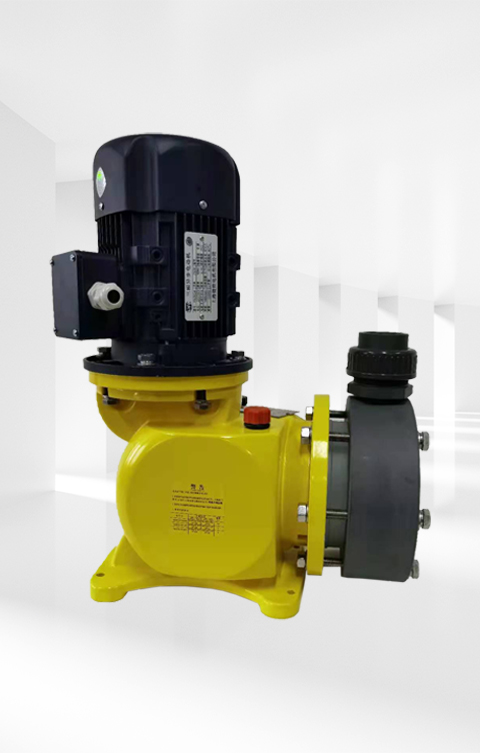The advantages of diaphragm metering pumps.
Diaphragm metering pump is often used in daily life. Diaphragm metering pump consists of four parts: driving system software, crankcase, hydraulic transmission system and pump impeller. When the diaphragm metering pump is working, the motor controls the pinion and rack to drive the transmission shaft to rotate, and the engine crankshaft converts the rotational fitness movement into the repeated movement of the plunger pump according to the crankshaft. The fitness movement of the diaphragm metering pump makes the gear oil in the hydraulic press chamber transfer the large role of the inner and outer diaphragm, and the repeated movement of the inner and outer diaphragm make the material chamber capacity change. At the same time, according to the control of the inlet and outlet throttle valve, the substance is sucked into the inlet of the pump impeller and discharged from the inlet and outlet. When the total flow of the pump is to be changed, the manual adjustment wheel is rotated to manipulate the size of the plunger pump stroke arrangement according to the eccentricity of the engine crankshaft system software, so that the bearing force of the hydraulic press chamber changes, and then the repeated motion of the film is changed. Complete the adjustment of the total flow, common fault analysis and solution The reason and solution of the metering pump is not enough or the amount is not enough diaphragm is invalid or the throttle valve is blocked If the metering pump is not enough or the amount is not enough, first check whether the throttle valve is blocked or the surface diaphragm is not invalid. When checking, first remove the pump impeller throttle valve oil circuit plate, run the motor, and adjust the plunger pump travel arrangement, and observe whether the pulse damper fitness exercise intensity has changed, if the pulse damper changes the fitness exercise intensity with the plunger pump travel arrangement, it indicates that the pulse damper is intact. Then the water is introduced into the throttle valve, if the water can not be entered from the channel, or can not be discharged from the outlet, it indicates that the throttle has been blocked, if the water can be injected from the outlet and the channel is discharged, it indicates that the throttle valve is reversed and must be adjusted. Throttle blockage can occur in a wide range of situations due to excessive residue during the entire NSI seasoning process. The treatment method is to lead the pump channel pipe from the bottom of the batching tank to lead out from the tank, raise the relative height of the pipe, so that the residue is deposited at the bottom of the tank, and then discharge on time. When the diaphragm metering pump with oil groove inlet throttle valve is damaged, the hydraulic press chamber is filled with gear oil. When the hydraulic oil in the cavity is not enough, the oil in the attached oil tank will fill it according to the feeding valve. If the valve is damaged, it will cause the pulse damper to terminate the fitness movement or the operation is insufficient, and then cause the pump can not be pumped or the amount is not enough. There are generally three factors for the failure of the throttle valve with oil groove: the valve core and the high pressure gate valve do not cooperate well; Oil plate seal ring is invalid; The valve torsion spring is invalid or its pre-tightening force is unreasonable.




